feature / alumni / faculty / students / staff / environmental-design / industrial-design / graphic-design / product-design / sponsored-projects / internships
October 25, 2013
Writer: Sylvia Sukop
Power in Partnership: Industry Collaboration Prepares Students for Success
The day Max Knecht pulled a squid, a walrus, a deer and a bunny out of a bright green vintage suitcase is the day he landed his first big deal as a designer.
“It was a formal meeting in [Knock Knock company founder and CEO] Jen Bilik’s office,” recalls Knecht (BS 11 Product Design), who was still a student at the time. “But bringing all those animal body parts in a suitcase broke the seriousness.”
These were no ordinary plush toys. An imaginative take on swapping identities, Knecht’s bright-colored animals had a clever postmodern flair. Each one separated into three segments, and he demonstrated for Bilik how these “lumps” could be zipped together in any combination. She loved the crisscross-creature concept and offered Knecht a buyout on the spot. Today six different Clump-O-Lumps are available on Knock Knock’s website.
It’s tempting to call moments like this magic, the proverbial rabbit pulled out of a hat. Or a lucky break, all about who you know.
But it was none of these.
Instead, Knecht’s success, like that of so many ArtCenter College of Design students, was the result of personal drive and years of disciplined effort in a demanding yet supportive learning environment where some of the most valuable lessons come from designer-meets-real-world courses like instructor Mateo Neri’s (BFA 93 Graphic Design) on taking ideas to market, which provided the introduction to Bilik.
Knecht would soon achieve an even more powerful leg up through an industry sponsored project.
It’s tempting to call moments like this magic, the proverbial rabbit pulled out of a hat. Or a lucky break, all about who you know. But it was none of these.
Alumni Help Leverage Corporate Engagement
ArtCenter boasts a long history of industry partnerships dating back more than half a century. Beginning with the General Electric Space Capsule project in 1960, followed that year by the General Motors Turbine Car project, hundreds of corporate-funded collaborations have taken place in the College’s classroom studios—indeed they are now woven into the very fabric of an ArtCenter education.
A wide range of industries, from automotive and healthcare to food-and-beverage and consumer products, regularly tap into the College’s talent pool while providing internships for its students, job opportunities for its graduates and other vital support to its top-ranked design programs. Such partnerships are often personally shepherded by ArtCenter alumni, among the most respected creative leaders in their fields, demonstrating on a daily basis the value that ArtCenter delivers.
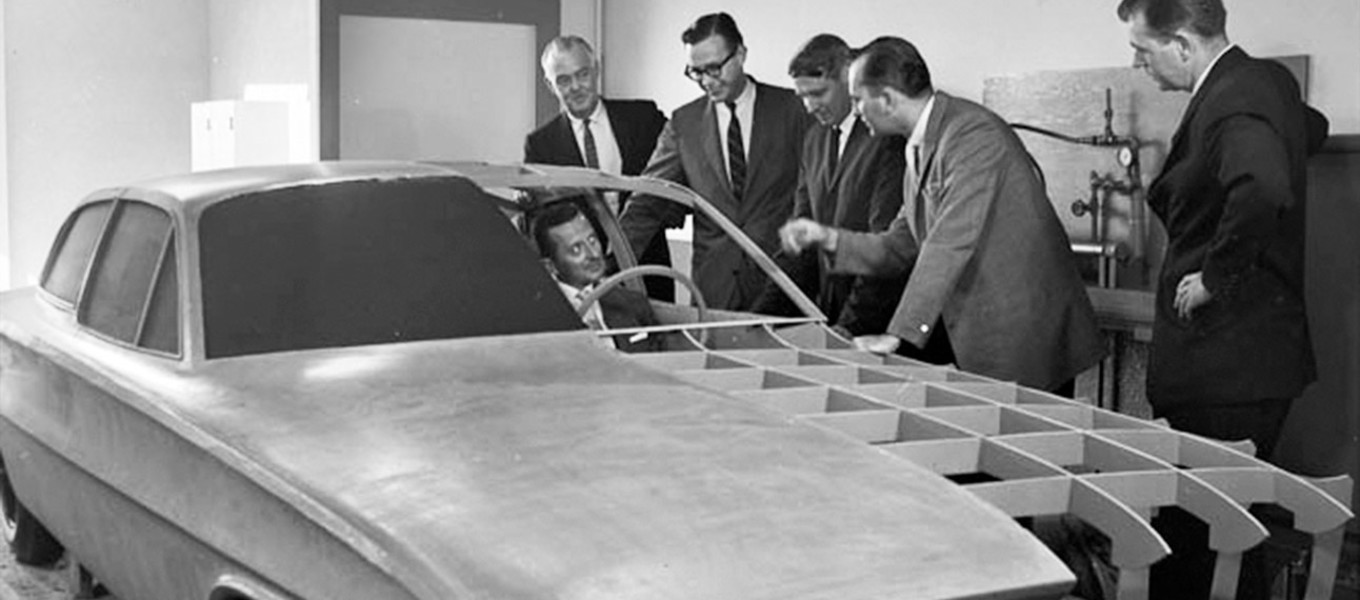
“Alumni are ArtCenter’s ultimate brand ambassadors,” says Alumni Relations Executive Director Kristine Bowne. “We depend on the corporate relationships they can help leverage on behalf of ArtCenter. More than half of our sponsored projects get started through the initiative of alumni, and it’s a profoundly important way of giving back to the College.”
Sponsored projects mirror professional practice. Students, often working in teams, are presented with a project brief that outlines a specific design challenge. Guided by faculty with feedback from the sponsor, they have 14 weeks to design solutions. Students own the intellectual property they create, and the sponsoring company has first rights to purchase it, within 90 days of the project’s conclusion.
Two additional ways companies can engage with students: an immersive three-day DesignStorm® developed in collaboration with Product Design Chair Karen Hofmann (BS 97 Product Design) and, new this year, a week-long DesignFlash.
“These industry engagements take our learn-by-doing pedagogy into action, simulating real-world conditions and requiring cross-disciplinary collaboration, so employers can see how students perform as a team,” says Executive Director of Educational Partnerships Elizabeth Collins. “They also bring students significant opportunities for mentorship, internships, networking and jobs—and, with a portion of sponsorship fees going to the ArtCenter Fund, much-needed scholarships as well.”
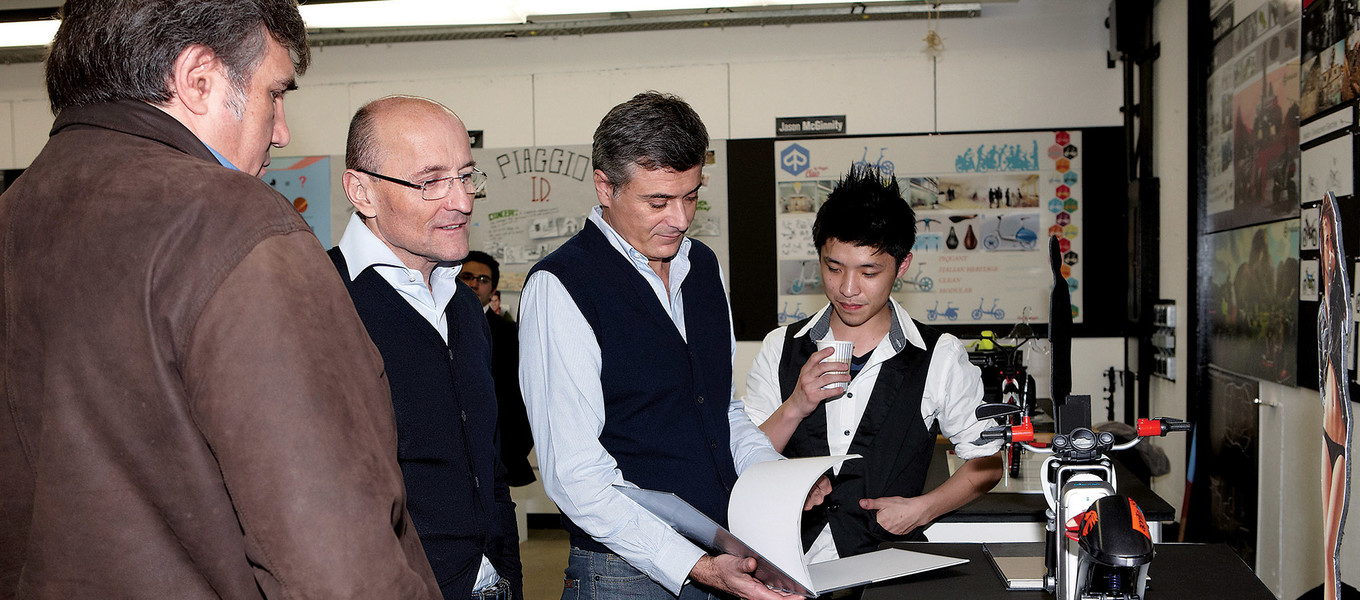
In a sponsored project, students own the intellectual property they create, and the sponsoring company has first rights to purchase it.
A Valuable Return on Investment
Growing up in Orange County, Knecht constantly “sketched and doodled, took apart and built things,” finding inspiration—and an eager audience—in his four younger siblings. He recognized early that “good design doesn’t just come from a random idea,” and in the eighth grade discovered the profession of industrial design. His cousin Anna Wolf (BFA 02 Photography and Imaging), an ArtCenter student at the time, gave him a tour of the Hillside Campus and immediately he knew it was where he wanted to study.
With his sights now set on a career and a college, Knecht never wavered. He finished high school at Orange County School of the Arts, took preparatory classes at ArtCenter’s Saturday High and at a community college and, while still a teenager, worked in an aunt’s advertising business, all the while building his skills and portfolio. Finally he applied and was accepted to ArtCenter, where his work ethic and positive attitude served him well.

In his seventh term at ArtCenter, shortly before he sold his Clump-O-Lump toy concept, Max Knecht signed up for the 2010 Transdisciplinary Studio (TDS) sponsored by Johnson & Johnson Consumer Companies, Inc. (J&J).
On the client side, the project was led by Chris Hacker, then-chief design officer for J&J, and on the faculty side, by Gerardo Herrera (BFA 91 Graphic Design), Rob Ball (BS 83 Environmental Design) and Grant Delgatty (BS 95 Environmental Design)—affectionately known as the “Three Amigos.” An exploration of the future of retail, the project took Knecht and his fellow students to France. Knecht did not speak French but that didn’t stop him and his team from diving into a project that involved on-the-ground research and interviews with shoppers in a Carrefour department store (“the Walmart of France”) and a detailed analysis of the store’s spatial environment. The team’s findings and the design concepts informed by them were eye-opening and innovative. The sponsor, J&J, was impressed.
“Students like Max are the reason Johnson & Johnson does sponsored projects,” says Hacker, who has hired and worked with many ArtCenter grads in the course of his four-decade career. “Max is amazing, dedicated and knows what he’s doing. From that first trip to Europe, he really got it.”
The benefits of sponsored projects to partners and students are not only mutual, but measurable. J&J’s first partnership has led to five more, spanning three countries and generating original design thinking from dozens of students.
“For Johnson & Johnson, sponsored projects are an investment from which the company gets a tremendous, tangible return. It’s different from a philanthropic gift that way,” Hacker explains. “We get great work from young designers who are more flexible, more creative and come up with more interesting solutions. Once you work inside a company, you know what the boss wants. Students don’t yet have that bias.”
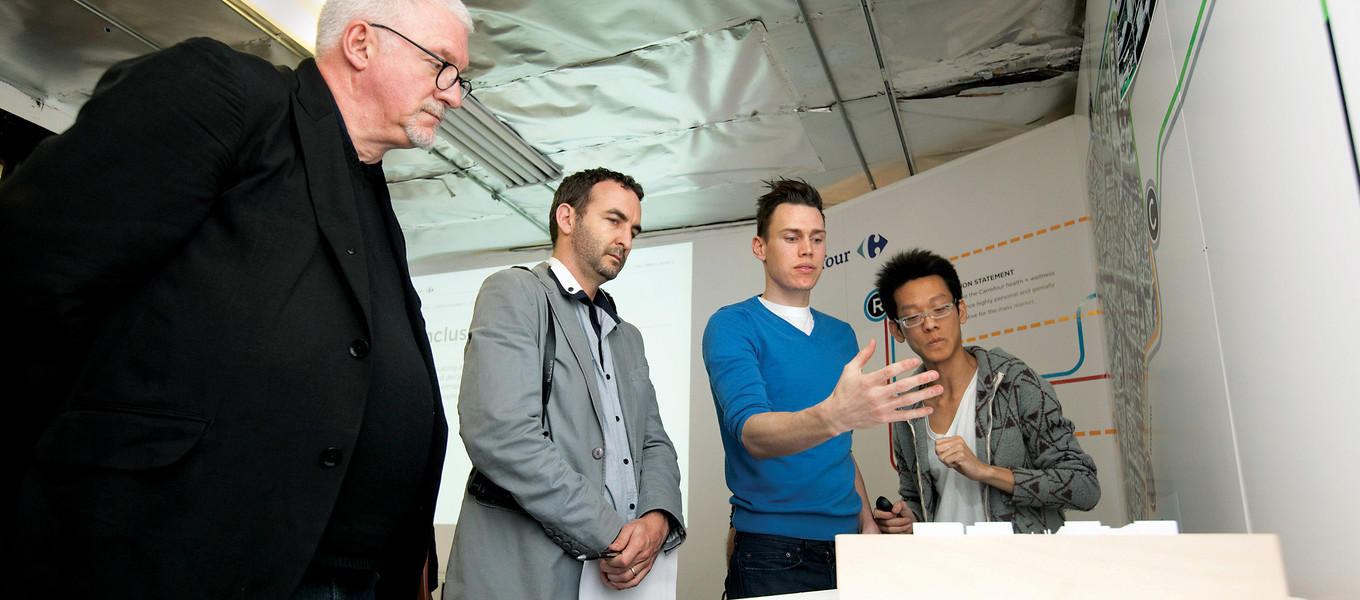
For Knecht, the J&J project was life-changing. At 23, with a glowing recommendation from Hacker and one term to go till graduation, he received a full-time job offer from the company. Three years on, he continues to work as an industrial designer in Johnson & Johnson’s creative think tank in Manhattan, and lives in Brooklyn—not far from the cousin who first introduced him to ArtCenter.
Hacker, a longtime client of sponsored projects, had always wanted to teach. This year he joined ArtCenter’s undergraduate graphic design faculty and led a course in Information Design, with a focus on environmental design; also this year he left J&J to join Herman Miller as vice president of marketing and design. (Though he is not teaching at ArtCenter this Fall, he will return in 2014.)
Students as Researchers, Makers, Systems Thinkers
Design that goes beyond producing an artifact to become a tool for generating knowledge has been a centerpiece of Heidrun Mumper-Drumm’s tenure at ArtCenter. The director of Sustainability Initiatives teaches courses integrating design with sustainability and lifecycle thinking. She also serves as faculty advisor to the student-led EcoCouncil and was principal investigator of a Nestlé sponsored research project. With Christian Saclier, Nestlé’s global head of industrial design, and Marshall Hamachi, associate director of ArtCenter’s Color, Materials and Trends Exploration Laboratory (CMTEL), she co-authored a paper informed by faculty and student research that offers a breakthrough methodology and tools for making lifecycle assessment data—information critical to sustainable design—accessible throughout the design development process.
Neeti Kailas (MS 13 Industrial Design), who was one of those student researchers, and fellow alumna Kisun Kim (MS 11 Industrial Design) completed Nestlé sponsored projects in 2011 and 2009, respectively, and the company bought the rights to the design concepts they each developed (the details of which remain confidential). Both went on to complete Nestlé paid internships and were subsequently hired by the Swiss-based company’s Purina division in St. Louis, Mo.
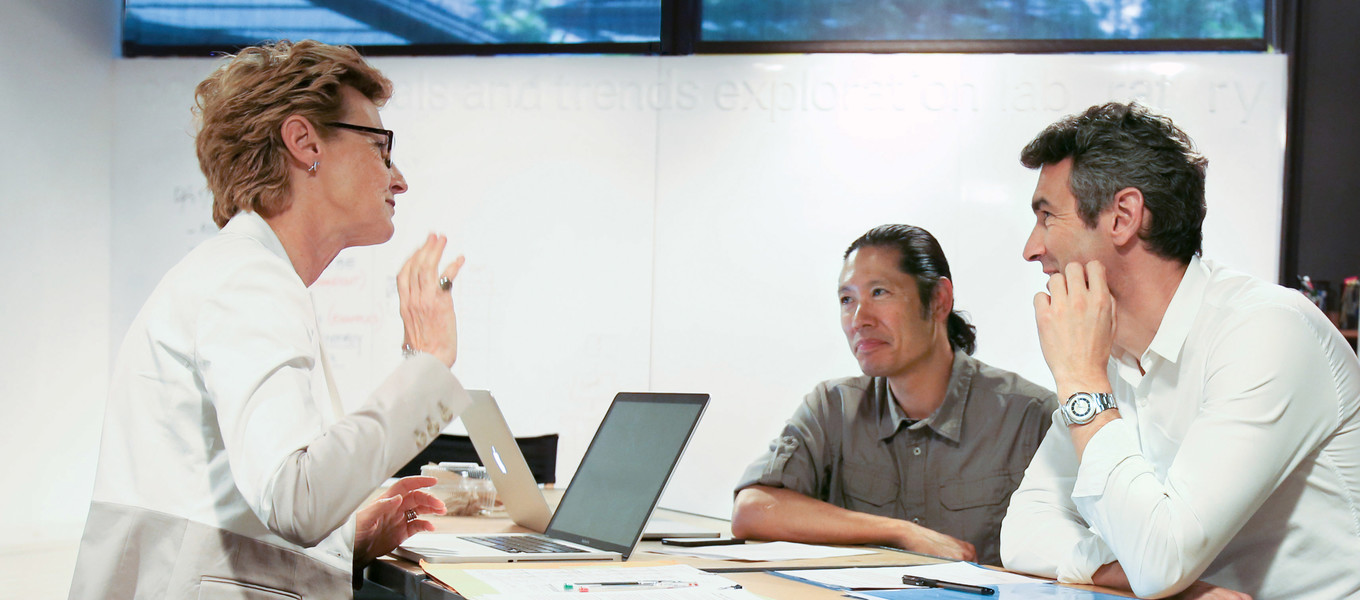
Saclier, a designer with an engineering background, says next-generation designers like Kailas and Kim have “fresh, open, creative minds” and can help companies like his solve creative problems by making “non-obvious links.” He is consistently impressed with “the high quality of ArtCenter students’ ideas and presentations—pragmatic, output-driven and tied to industrial reality.”
“The Industrial Design program, and Heidrun in particular, gave me the analytical tools I needed to build the case for why we need sustainable design,” says Kailas, today a Nestlé Purina design strategist. “There’s a big industrial demand for designers as skilled systems thinkers. It’s ArtCenter’s value proposition, if you will.”
Born in India, Kailas (who speaks four languages) worked in motorcycle and cell phone design before coming to ArtCenter with a desire to “move upstream in the design process,” she says. “I’m a huge fan of real-world applications—commercial viability is what excites me.”
Her participation in the College’s prestigious INSEAD partnership, which she describes as “half an MBA,” helped to further round out her big-picture perspective.
Kim, creator of several innovative product designs (including a flavored drink-dispensing water bottle and a suitcase that doubles as a seat), says her undergraduate industrial design education in Korea emphasized concepting, not making through systems thinking. “ArtCenter was known for this, and it’s where I learned to take my ideas beyond the drafting table or the gallery into the marketplace.”
Her Nestlé TDS was led by the “Three Amigos” faculty members, and she credits her mentor, Grad ID instructor Krystina Castella, with helping “toughen” students for the real-world business challenges they will face.
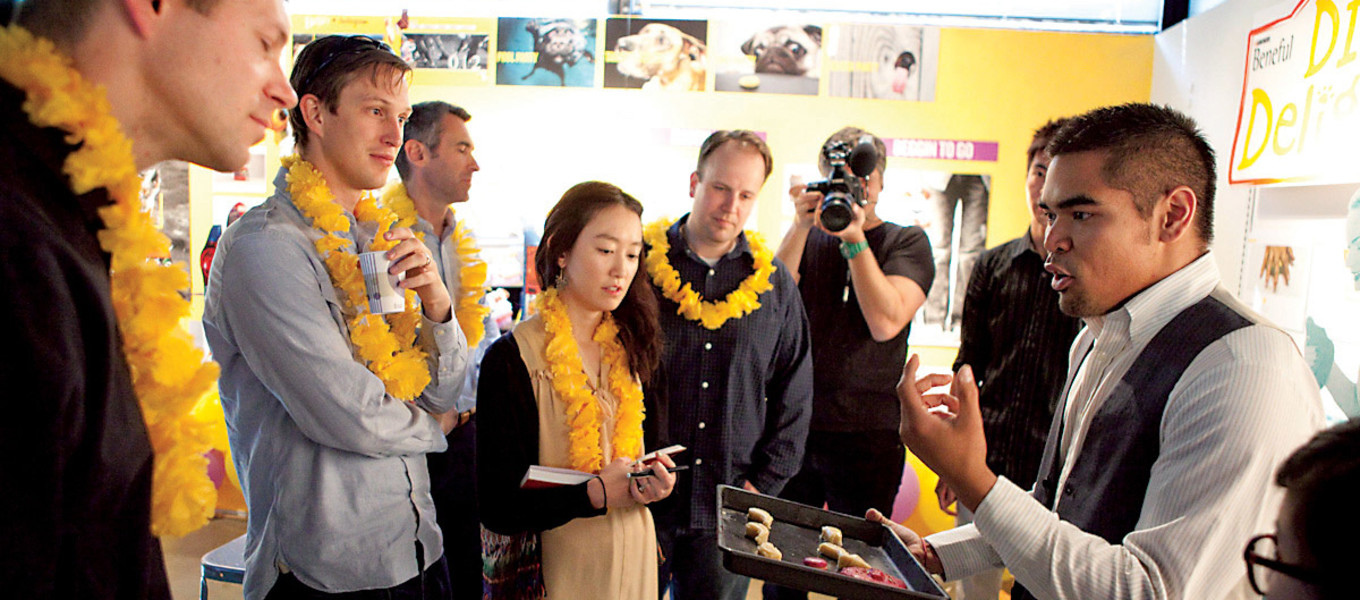
After joining Nestlé Purina as an industrial designer, Kim was thrilled to return to ArtCenter on the client side for the “Purina Remix” TDS in 2010 and for Purina Snacks Play in 2013.
ArtCenter also partners extensively with nonprofit and nongovernmental organizations, and Alumni Relations’ Bowne collaborates with the College’s social impact department, Designmatters, on developing a network of alumni mentors who play a critical role in bringing sponsored projects to the College.
“Throughout its institutional history, ArtCenter has been committed to making design relevant,” notes Bowne. “In earlier years that mainly meant relevant to industry. Today it’s also about social relevance. We’re not a research university, but we are an institution producing new modes of research through design.”
Companies and organizations of every size can benefit from an engagement with ArtCenter. “But everything we do is in service of our students,” Collins emphasizes. “We have one goal and that is to prepare our students to have an impact in their chosen field. ArtCenter’s educational partnership model is a rigorous and proven way to do that.”
“Students’ success stories are not the stuff of fairy tales,” adds Product Design Chair Hofmann. “They are firmly grounded in reality—the real-world conditions that ArtCenter’s sponsored projects are designed to simulate. Where magic happens is in the hard work of students and faculty, and in the generosity of those who support them.”
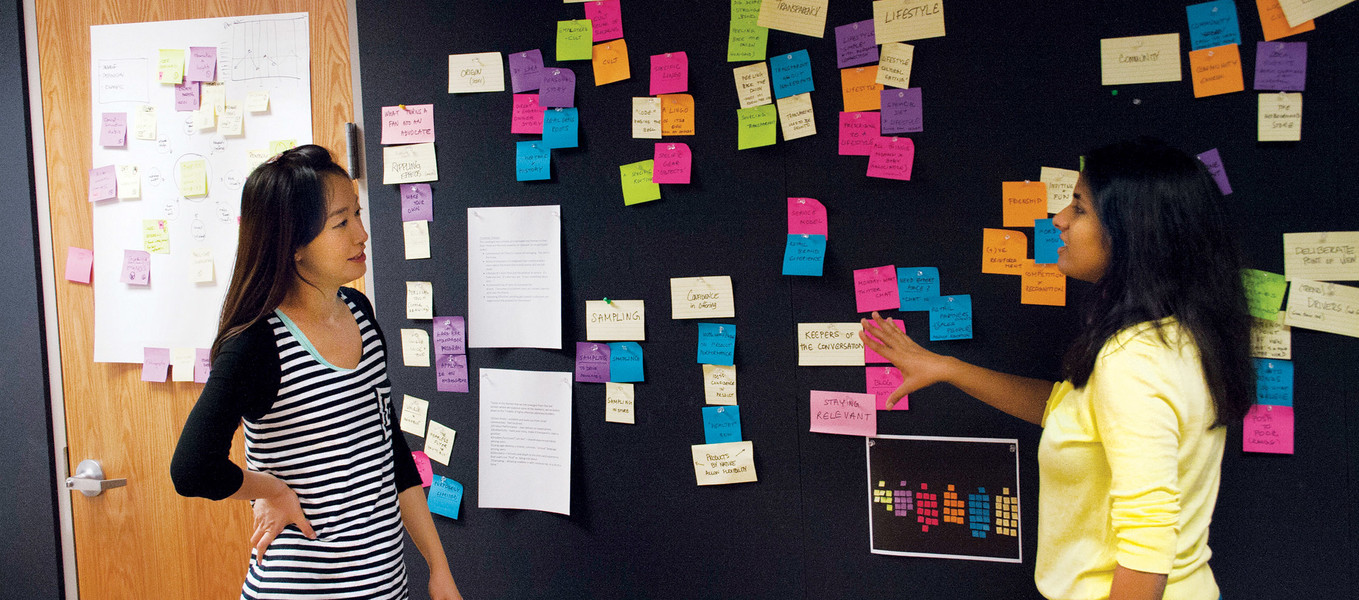
Our partners in educating the design leaders of tomorrow
From sponsored projects, philanthropic gifts and in-kind donations, to scholarships, internships and job opportunities, ArtCenter’s corporate partners provide vital support for our educational mission. Following is a partial list of partners in the past three years.
- American Red Cross
- Autodesk
- Avery Dennison
- Bernhardt Design
- Boeing
- Calty Design Research
- Chrysler
- City of Pasadena
- Clemson University
- Coda
- Daimler Trucks
- EcoMotors
- FUJITSU TEN
- General Motors
- Honda
- Hyundai
- Johnson & Johnson
- Jenny Craig
- L'Oréal
- Layar
- Mazda
- Metal Finishing
- Association of Southern California
- Microsoft
- Nestlé
- Nike
- Piaggio
- Purina ONE
- Purina Snacks
- Quiksilver
- Saatchi & Saatchi LA
- Sennheiser
- Teague
- The J. Paul Getty Museum
- Toyota
- TPI
- X Prize Foundation
- Zero Motorcycles





